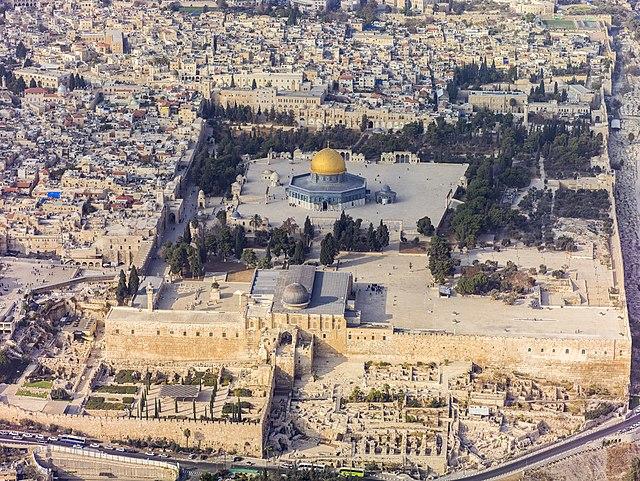In ancient times, a temple was regarded as a house of the gods. The belief was that the gods lived in the temple in the form of a statue or image. The Israelites, (the Jewish People), believed in just one God and were forbidden to have any images of God.
Temples were a place of both religious and national identity and in times of war, destroying the temple was regarded as a sign of victory over a people and their god. Just as important, the rebuilding of a temple showed the return of the deity, and the return of power and protection.
Unlike religious practice today, the temple was not the regular, weekly place of worship in which the people gathered. That was the synagogue. The temple was really the domain of the Priests, who would offer prayer, incense, food and sacrifices on behalf of the people, petition or plead for various needs of the people – both individual and as a nation.
The first temple was an impermanent, tent-like structure, developed during the time of the Exodus. It was where God would dwell among the people (tabernacle). The Temple housed the Ark of the Covenant – the sacred container which according to tradition held the two tablets of the Law (Deut 10:2,5). This was a sign of the Covenant between God and the people, and eventually the Ark came to be seen as God’s presence among them.
This video is informative:
Solomon’s Temple
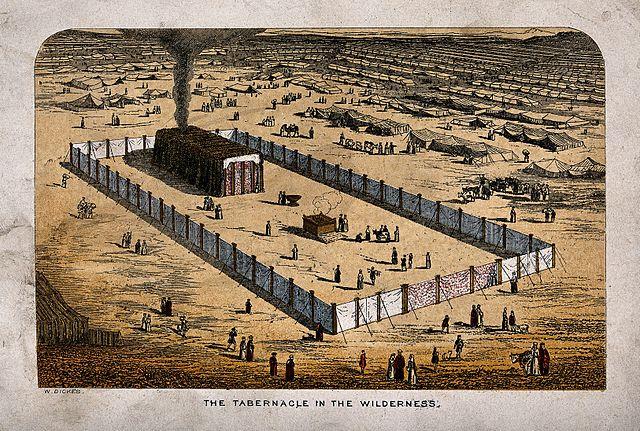
When Solomon built the first permanent Temple in Jerusalem (approx. 1000 BC), it became known as the ‘house of God’, the central place of worship of God. This new temple functioned as the centre of both religious and political power. Israelites would still attend their local synagogue for worship and prayer but the Temple, through its legal authority and hierarchy of Priests, high Priests and Sanhedrin, became a place of religious and financial power. It was the place where the liturgy of Israel would be concentrated, the place where the priesthood of Israel was established. Three annual festivals; Shavuot (Pentecost), Pesach (Passover) and Sukkot (Tabernacle) obliged Israelite men to attend the Temple so the Temple at Jerusalem was an important part of the people’s religious life. Many of the psalms, like Psalm 24, refer to going up to the Temple (the ‘holy place’ v. 3).
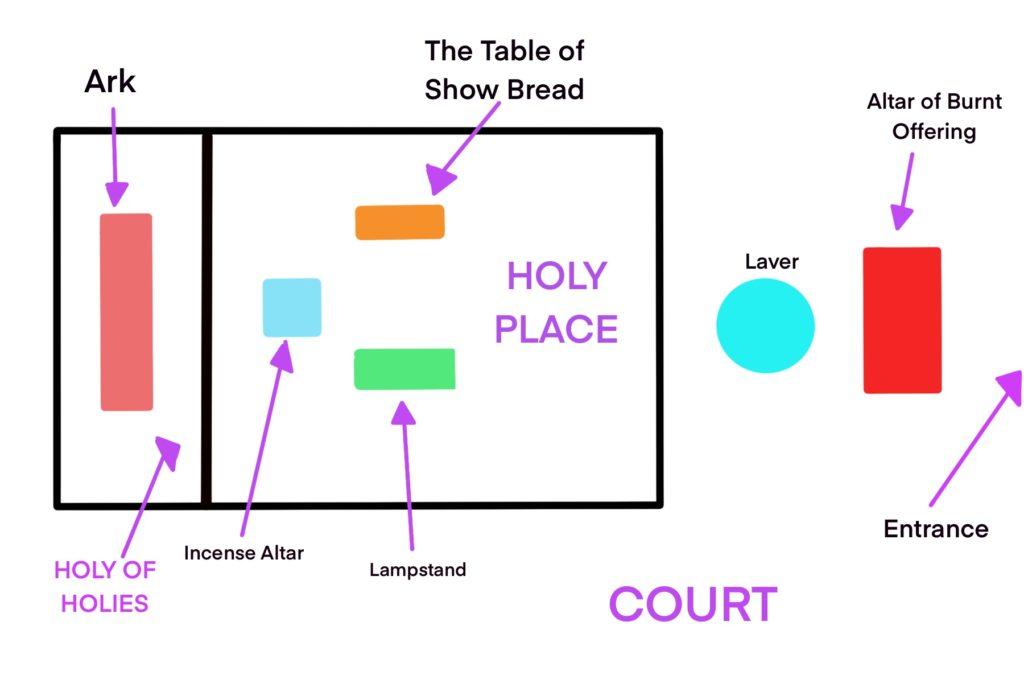
The First Temple was destroyed in 587 BC when the southern kingdom of Judah was conquered by the Babylonians. When the Persian king, Cyrus, conquered Babylon in 539 BC, he freed the Jewish exiles living in Babylon.
Herod’s Temple
Rebuilding of the temple in Jerusalem began immediately under the prophet Ezra and was finished under the reign of Herod the Great who turned it into a magnificent opulent structure covered in gleaming limestone and gold trim. Around it he had an expansive courtyard built and, at one end a graceful Greco-Roman portico, which, as a Gentile who could not enter the Temple, he was known to recline in to watch the activity going on around him.
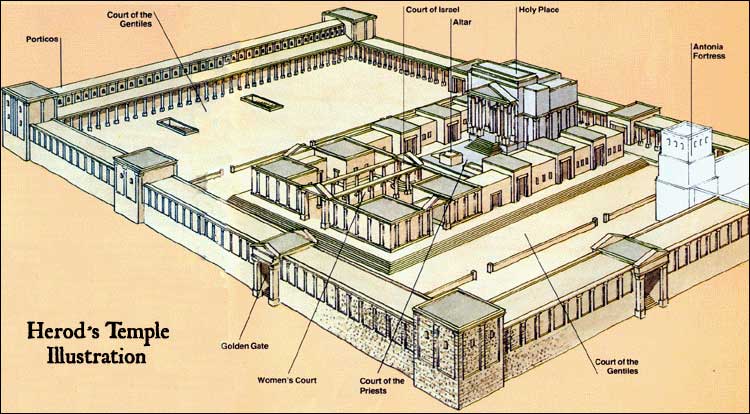
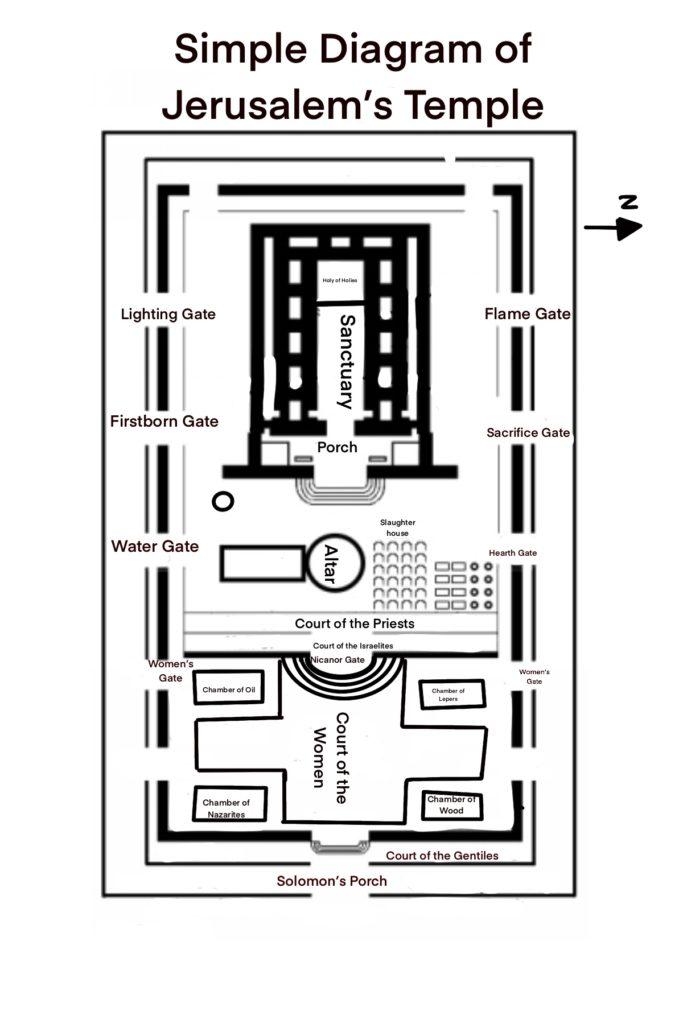
In 70 CE Herod’s Temple was destroyed by the Romans in the Jewish-Roman war. The Jewish temple has never been rebuilt. The temple mount – defined by the huge retaining wall Herod had built – remains however, and is clearly visible today. In the centre sits The Dome of the Rock, an Islamic shrine, is also visible in this image below.
